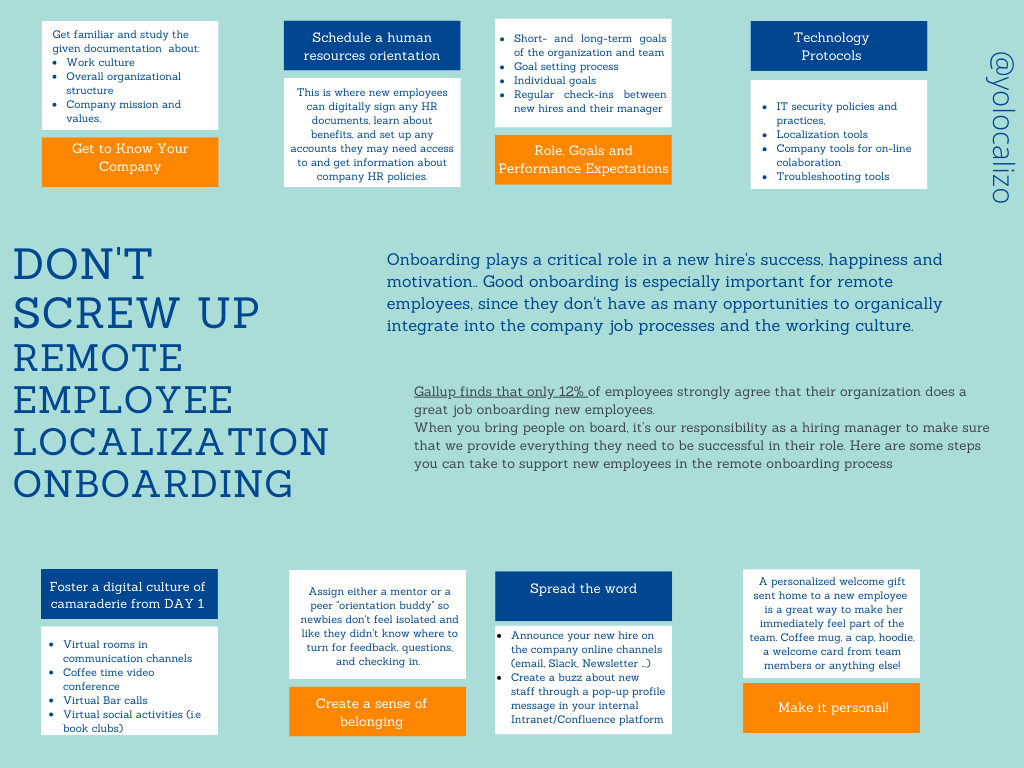Why you might need an internal Localization PM?
For an outsider of the localization industry, certain things are difficult to understand at first sight.
One of them is to fully be aware of how fragmented this translation industry is. There are thousands of language providers!
Another concept that although it can be understood, it turns out that it usually tends to be over-simplified, is the role of a Localization Project Manager at the client-side.
I find people quite often when explaining the role of the LPM that they do think that the participation of localization PMs in production processes is all about sending files for translation, collecting translated files, and passing those files to software developers.
They perceive simplicity of the role of the PMs as “file-pushers”
In this oversimplification of the role, it is not surprising that a scenario such as the following can be produced.
A company that develops software decide to outsource certain functions, one of them being localization.
And the next question sooner or later arises
Why do we want an internal PM if we are taking everything to translate outside?
If a company does not have an internal translation team since it works on an outsourced translation model, what is the value of a Localization PM in such a scenario?
Wouldn't it be easier for a developer to contact LSPs directly to send files?
The answer is a resounding no.
That mentality that considers that an internal LPM at the client-side is a file pusher is obsolete.
LPM functions go far beyond file management
Internal LPMs influence over projects, they seek for growth in new markets and opportunities for expansion. They create The Localization Strategy and that is something that should not be outsourced. With that strategy, they help to save money, reduce the turnaround time, and bring consistency to the company tone of voice in the different international markets. That is much more than file-pushers!
To help clarify what may seem to be an opaque process, I have drafted here what I believe are the three main attributes that an internal PM brings to a company
Consistency
When a company has different production teams working on different products, an LPM brings consistency and harmony to the company brand.
Let's take the example of an app developer who wants to translate an application into 20 languages.
Let's imagine that they have a portfolio with 4 apps on the market and another 2 in development.
If each development team contacted LSPs directly, each app developer could have their own style guide, their own tone of voice for their piece of product, and all that based on their personal preferences since a developer is not a specialist in languages or local culture knowledge or the international markets.
An internal LPM makes sure that each individual project in the portfolio of a company is aligned with the company’s branding and they guarantee that the tone of voice is consistent across the different international markets for ALL the different products
They ensure to make the relevant changes per market to engage locally. They do this by creating a “style guide” of preferred expressions, and translations, so it fits seamlessly into the company’s overall strategy.
And they do this by “infiltrating” within the development teams to have access to product demos, roadmaps and have first - hand access to technical specifications that will help them understand the functionality of the product, and that it’s crucial to create valuable style guides and localization kits.
Communication
A study conducted by the Project Management Institute (PMI) revealed that ineffective communication harmed successful project execution and found that poor communication leads to project failure one-third of the time
Probably this data did not surprise you much since I am sure that there will have been more than one post-mortem or retro that you have done and when you have reached the section " What can we do differently " there have been comments such as:
Missing or incorrect assumptions that caused project communication issues such as a gap in expectations
Lack of or limited buy-in and commitment to the project
Conflicts between the project team and stakeholders, or between stakeholder groups
Communication is a complex topic. Communication across cultural boundaries adds an element of complexity and we need to consider the best ways to communicate with others dependent on several factors such as their attitudes toward hierarchy and their preferences in communication styles.
An internal localization Project manager will help you to navigate successfully the complexity of cultural comms
A project manager helps organize distributed resources, external and internal Localization Project Managers know the different markets of the product they are localizing, they know the product extremely well and they know the competitors. They are like the CEO of the product and they take full responsibility for the communication between different stakeholders to avoid having teams working in silos
Predictability
Perhaps one of the features most appreciated and valuable LPM brings to a business is predictability, it brings order, it brings control.
A project LPM ensures each project is professionally completed, troubleshot, and organized so it stays on schedule and budget.
They anticipate the problems, prepare risk contingency plans, and build real solutions.
They work with internal stakeholders to anticipate the cost of localization, to anticipate the potential schedule constraints, and they do this with one goal in mind. Let there be no surprises either in the delivery dates of the localization work or in the money we spend when localizing our software.
Predictability is one of the great attributes that LPMs bring to a team!
The Takeaway: Why you might need internal LPMs?
LPMs are an essential component of any successful international product launch because of their unique position between internal stakeholders and language providers.
An LPM is not a file pusher and then if you think like that, I can understand that you may be tempted to think that a software developer can send files to translate to an LSP and then sit and wait until they are back.
An LPM is a strategic internal business partner, they identify opportunities in untapped markets, they create an efficient process to ensure budget and schedules are predictable, and they do that by actively communicating with all the different stakeholders, they are routers of information, they connect people and they support the external translators acting as a firewall from crazy and unrealistic demands from internal stakeholders.
An internal LPM will be crucial for the implementation of technology frameworks, high-class TMS, and orchestrate complex Localization settings and this will empower automation and leverage efficiencies.
Localization Project Managers are very well strategically positioned internally within a company and they have an impact to contribute to increasing the revenue for a company product. Let's not be tempted to oversimplify their role assigning them the label of "file-pusher"
Have a wonderful week!
@yolocalizo













Before jumping on the AI bandwagon: What localization problem are you trying to solve? AI is everywhere right now, including in localization.
But before jumping on the bandwagon, we need to stop and ask:
Are we solving the right problem?